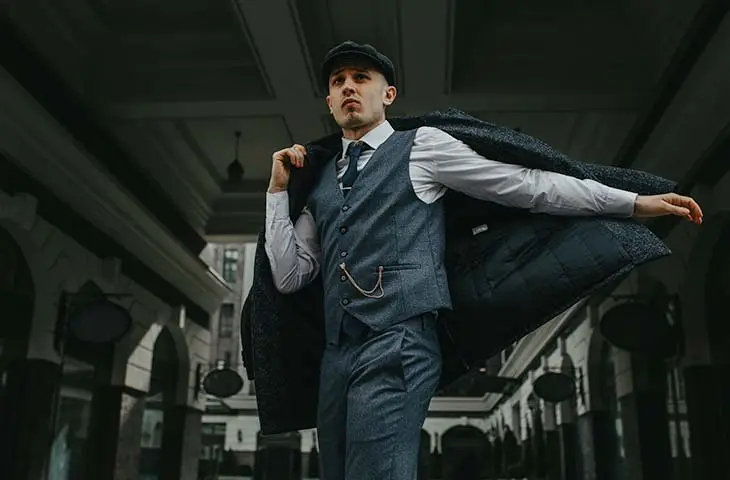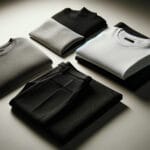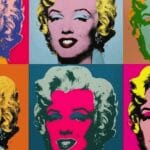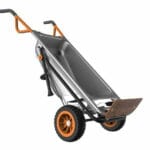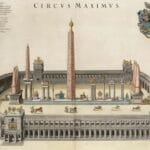The Dawn of a New Era in Fashion
The Roaring Twenties (1920-1929) weren’t just a time of economic prosperity and social change—they were a revolution in fashion. This era swept away the restrictive corsets and long, heavy skirts of the Victorian era, ushering in a new era of comfort, liberation, and a touch of daring. But what did people actually wear in the Roaring Twenties? Let’s delve beyond the glitz and glamour of flapper dresses to uncover the diverse styles that defined this iconic decade.
Women’s Fashion: A Celebration of Freedom and Style
The 1920s saw a dramatic shift in women’s roles and attitudes, and fashion became a powerful form of self-expression. Here’s a glimpse into the wardrobes of women who embraced the spirit of the age:
Daywear: Embracing Comfort and Practicality
While eveningwear often stole the spotlight, daytime attire for women in the Roaring Twenties was all about striking a balance between style and practicality.
- Farewell to Restriction: Gone were the days of tightlacing and heavy skirts. The 1920s embraced looser silhouettes and shorter hemlines, allowing women greater freedom of movement for work, leisure, and of course, dancing!
- The Rise of the Drop-Waist Dress: Dresses with a dropped waistline, often accented with a belt or sash, became incredibly popular. These dresses skimmed the body rather than clinging to it, offering a more relaxed yet still feminine silhouette.
- Fabric Choices: Everyday dresses were typically made from comfortable and affordable fabrics like cotton, linen, and jersey.
- A Touch of Elegance: While simplicity was key, women often added a touch of elegance to their daywear with details like embroidery, lace trim, or delicate pleats.
- People’s Statement: “Women wore dresses all day, every day, rain or shine.”
For Work and Travel:
- Practicality Reigned: For women working outside the home, clothing choices depended largely on the profession. Uniforms were common in factories and hospitals, while teachers, secretaries, and other professionals favored more tailored and modest dresses.
- A Silk Mill Worker’s Style: One vintage account describes a silk mill worker’s typical outfit as a “canton silk dress with an embroidered waistband”—showcasing how women incorporated elegance even into their workwear.
- Travel Clothes: When traveling, women often opted for simple, tailored suits that offered both comfort and a touch of sophistication. Warm overcoats and sturdy shoes were essential for journeys by train, car, or bus.
Eveningwear: Shimmer, Shine, and Dance the Night Away
As the sun set, the Roaring Twenties truly came alive, and eveningwear embraced the era’s exuberance and glamour.
- The Flapper Takes Center Stage: The flapper dress, with its dropped waistline, shorter hemline (often reaching the knee), and lavish embellishments, became an iconic symbol of the era. These dresses were designed for movement and often featured fringes, beads, sequins, or intricate embroidery that shimmered under the dance hall lights.
- Beyond the Flapper: While the flapper dress is synonymous with the Roaring Twenties, women also embraced other glamorous styles for evening. Elegant gowns with bias-cut designs, often made from luxurious fabrics like velvet, satin, and silk, exuded opulence and sophistication.
- Accessories: No evening look was complete without the right accessories. Long beaded necklaces, feather boas, cloche hats adorned with ribbons or jeweled clips, and small clutches or Art Deco handbags added the perfect finishing touches.
- Footwear: Strappy heels, T-strap shoes, and Mary Jane pumps were popular choices, allowing women to dance the night away in style and comfort.
Beyond the Stereotype: The Diversity of 1920s Women’s Fashion
It’s important to remember that not all women embraced the flapper aesthetic. The 1920s saw a fascinating mix of styles influenced by factors like age, personal taste, socioeconomic status, and geographic location.
- Sophisticated Elegance: Designers like Coco Chanel revolutionized women’s fashion with their emphasis on simple lines, luxurious fabrics, and a more androgynous silhouette. Chanel’s designs offered a chic alternative to the overtly feminine and embellished flapper style.
- Sporty Chic: Daywear also drew inspiration from menswear, with tailored blouses, cardigans, and argyle socks gaining popularity among women who embraced a more active lifestyle.
- A Spectrum of Styles: Ultimately, the 1920s were about breaking free from tradition and embracing individuality. While some women favored the glitz and glamour of flapper fashion, others preferred more understated elegance, tailored looks, or sporty styles that reflected their own personal tastes and lifestyles.
Men’s Fashion: Sharp Suits and a Touch of Rebellion
Men’s fashion in the Roaring Twenties also underwent a transformation, moving away from the formality of previous decades towards a sharper, more streamlined silhouette.
Suits: The Cornerstone of a Gentleman’s Wardrobe
- Tailored to Perfection: The suit remained a staple of men’s fashion, but it took on a more modern edge. Double-breasted jackets with slimmer silhouettes and trousers that were wider in the leg than in previous years became increasingly popular.
- Fabric and Color Choices: Wool, tweed, and flannel were favored fabrics for suits, with darker shades of gray, blue, and brown dominating winter wardrobes. In the warmer months, men opted for lighter hues like ivory, white, tan, and even pastels.
- People’s Statement: “For most men, suits were the day-to-day attire. Striped, plaid, or windowpane suits came in dark gray, blue, and brown in winter and ivory, white, tan, and pastels in summer.”
Shirts and Accessories: Adding Personality and Flair
- Shirts: White dress shirts remained a classic choice, often featuring detachable collars that allowed for greater versatility. The rounded “club” collar style gained popularity, adding a touch of casual sophistication. Colored shirts with stripes or subtle patterns also emerged as fashionable options.
- Accessories: Accessories played a key role in completing a man’s outfit, allowing for personal expression and a touch of flair. Ties came in a wide array of vibrant colors and patterns, while pocket squares added a dash of sophistication.
- Hats: Hats were considered an essential part of a man’s attire, with fedoras, homburgs, bowlers, and newsboy caps being popular choices. Each hat style conveyed a slightly different image, from the rakish charm of the fedora to the more refined elegance of the homburg.
- People’s Statement: “All suits had matching lapel collar vests with a pocket watch and chain dangling from inside.”
Casualwear: Embracing Comfort and Style
Even in more casual settings, men in the 1920s maintained a sense of style.
- Plus Fours: These baggy trousers, which extended below the knee, were a popular choice for leisure activities, often paired with argyle socks, knitted vests, and newsboy caps.
- Sporty Attire: For sporting pursuits like tennis or golf, men favored white trousers, white sweaters, and vests, reflecting the era’s growing interest in athleticism.
The Enduring Legacy of Roaring Twenties Fashion
The Roaring Twenties left an indelible mark on fashion, forever changing the way we think about style and self-expression. This era embraced freedom, individuality, and a touch of rebellion, encouraging both men and women to push boundaries and embrace their own unique sense of style. From the effortless glamour of flapper dresses to the sharp tailoring of men’s suits, the fashion of the 1920s continues to inspire designers and fashion enthusiasts today. Whether it’s the resurgence of Art Deco jewelry, the popularity of vintage-inspired clothing, or the enduring appeal of a well-tailored suit, the spirit of the Roaring Twenties lives on in the world of fashion.
